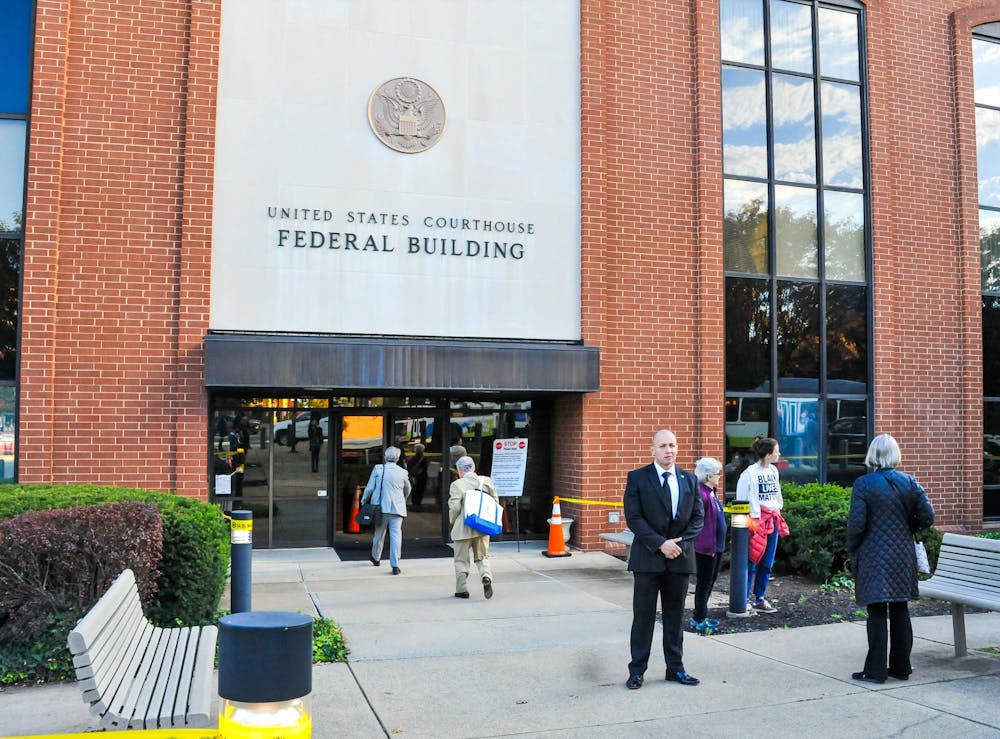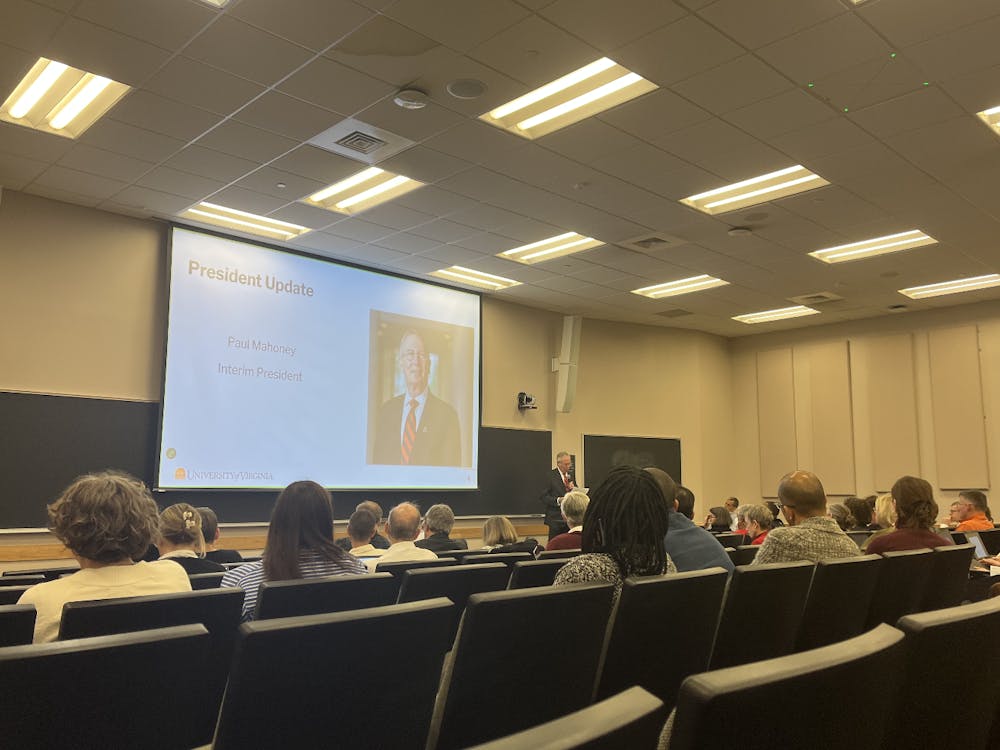The trial of “Unite the Right” rally organizers continued last week with the plaintiffs beginning to call witnesses to the stand. Jurors heard testimony from victims who suffered injuries Aug. 11 and 12 as well as evidence from defendants who participated in the rally.
The plaintiffs are trying to present evidence to the jury that will support their claims that the leaders of the “Unite the Right” rally conspired to commit racial violence. After the plaintiffs finish presenting evidence, the defense will have an opportunity to present evidence themselves that they did not conspire to commit violence.
The trial began Oct. 25. The first three days of the proceedings consisted of jury selection, then opening statements took place Oct. 28. Evidence from the plaintiffs began Oct. 29 and lawyer Roberta Kaplan says the plaintiffs plan to finish presenting evidence Nov. 11.
Natalie Romero gives testimony
Plaintiffs called their first witness to the stand the morning of Oct. 29 — Natalie Romero, a class of 2020 alumnus who was injured Aug. 11, 2017. Romero was one of the counterprotesters who circled the statue of Thomas Jefferson in front of the Rotunda when white supremacist protesters marched down the Lawn. She and Devin Willis — class of 2020 alumnus and another plaintiff who testified Friday — were maced by protestors as they stood around the statue. The next day, Romero participated in the peaceful counter-protest in downtown Charlottesville but was spat on by protesters.
Later that day, James Fields hit Romero with his car when he drove through a crowd of counter-protesters. The impact fractured Romero’s skull, breaking many teeth and left scars on her face and body. Fields is a defendant in this case and was found guilty in 2018 of the first-degree murder of Heather Heyer, eight counts of malicious wounding and one hit-and-run count for injuring dozens of others with his vehicle. Fields was sentenced to life plus 419 years in prison, as well as $480,000 in fines, and has been held in Hazelton Federal Penitentiary in West Virginia since September 2019.
During questioning, Romero explained she still suffers from the violence inflicted by protestors that weekend, noting that she cannot look at screens for too long without getting a headache, nor can she exercise. In October 2017, Romero took medical leave from the University and was diagnosed with anxiety and post-traumatic stress disorder. Romero later returned to the University and graduated in May 2020.
“I don’t feel safe in Charlottesville, I don’t feel safe in my own bed,” Romero said about her sense of safety in fall 2017.
Devin Willis gives testimony
The trial picked up again Nov. 1 with direct examination of Willis, who was assaulted Aug. 12 by a group of older men who were protesting. Willis then helped organize a peaceful counter-protest with People’s Action for Social Justice — a progressive political advocacy umbrella organization. After the violence of that weekend, Willis said he withdrew from his advocacy and was unable to keep up with schoolwork.
“It just felt like the world was falling in, like I was losing everything,” Willis said.
During cross-examination, defendant Christopher Cantwell asked Willis if he knew different counter-protesters in pictures presented as evidence, suggesting that these individuals were members of Black Lives Matter or Antifa – an anti-fascist protest movement. Cross examination of Willis took three hours and ended mid-afternoon Nov. 1.
Video testimony from Samantha Froelich
The next evidence presented by the plaintiffs Nov. 1 was video testimony from Samantha Froelich, a former member of Identity Evropa, a white nationalist group that aims to recruit college students. Froelich’s ex-boyfriend, IE leader Elliott Kline — also known as Eli Mosley — convinced her to join, but she left in October 2017 after the rally. Froelich testified that the goal of IE is the creation of a “white ethnostate,” a proposed nation whose citizenship is limited to white people.
“I was afraid there would be violence [at the rally],” Froelich said, explaining why she did not attend the “Unite the Right” rally.
Froelich’s testimony continued the following day, describing Kline’s obsession with killing Jewish people. Froelich also discussed Kline’s relationship with defendant Richard Spencer, a white nationalist leader who conceived the term “alt-right” and spoke at the “Unite the Right” rally. Froelich’s testimony covered a variety of topics, ranging from the relationship between Spencer and other “Unite the Right” organizers to discussions of violence that took place before the rally.
On one occasion at a party that Spencer and Kline attended, Froelich said there was a discussion about the legality of hitting protesters with cars.
“Eli said he was making IE a militia for Richard Spencer,” Froelich said.
Matthew Heimbach is called to the stand
The next defendant called to the stand Nov. 2 was Matthew Heimbach, founder of the Traditionalist Worker Party. The Traditionalist Worker Party is a neo-Nazi group that advocates for racially pure nations. Heimbach was fined over $12,500 in May 2020 for failing to cooperate with evidence discovery relating to the case, meaning he did not provide the court with the evidence requested.
Plaintiffs then showed the jury Heimbach’s messages in a Discord server planning the Unite the Right rally where Heimbach called for the “total destruction of Jewry.” During cross-examination, Spencer questioned Heimbach on their relationship. Heimbach said he and Spencer had only one conversation, during which they talked about their families.
Cross-examination of Heimbach continued Nov. 3 with Cantwell, who Heimbach about whether he thought Fields was at fault for driving the car through the crowd, Heimbach replied that he thought Fields was acting in self-defense.
Plaintiffs present evidence from Robert “Azzmador” Ray
The plaintiffs also presented video evidence from Robert “Azzmador” Ray — a defendant who has been sanctioned by the court for conspiring to engage in racially-motivated violence. Ray has since disappeared and is considered a fugitive.
“Our guys need to get a grip on the fact that they’re probably going to have to physically fight these people,” Ray says in one message dated Aug. 7, 2017.
Community members testify
Next to the witness stand was Diane D’Costa, a Class of 2018 alumna who had just moved into a Lawn room on Aug. 11, 2017. D’Costa expressed her terror at seeing the protesters with torches marching by her room.
Also examined Nov. 3 was Deborah Lipstadt, a professor at Emory University and expert in Jewish History and Holocaust Studies. Lipstadt discussed the falsity of Holocaust denial.
“For someone who believes in the ‘holo-hoax’ or Holocaust denial, for them to be right, who would have to be wrong?” Lipstadt said. “All the survivors who lived in the towns and villages near the camps — who smelled the burning flesh — the thousands of historians and finally the Germans themselves. There has never been a war crimes trial where a Nazi war criminal has said it didn’t happen.”
During cross examination, Cantwell asked Lipstadt if there is no such thing as an “innocent racist joke.”
“As an expert in antisemitism and in hate generally, I would say yes,” Lipstadt said.
Spencer is called to the stand
Spencer was called to the witness stand Nov. 4. During direct examination by plaintiffs’ lawyer Michael Bloch, Spencer repeatedly denied previous statements regarding the inferiority of Black and Hispanic people and denied using racial slurs in public. Spencer expressed remorse for the violence that occured at the rally.
Bloch then presented an interview Spencer gave hours after the rally.
“It was a huge moral victory in terms of the show of force,” Spencer said in the interview.
Spencer also said he did not have relationships with other defendants in the case, such as Cantwell.
Bloch then questioned Spencer about parties he hosted at his apartment during the summer of 2017, which many of the defendants in the case attended.
Video testimony from Michael Hill
Video testimony from defendant Michael Hill, a leader of the neo-Confederate movement League of the South, occurred Nov. 5. The plaintiffs showed the jury a video that included Hill discussing that he thought the Holocaust was a hoax, then burning the Israeli flag, the Talmud and a copy of Karl Marx’s “The Communist Manifesto.”
During the video testimony that followed, Hill said that he put Jason Kessler, a white nationalist blogger and an organizer of the rally, in touch with David Duke, longtime leader of the Ku Klux Klan. Hill also said that the League of the South had common interests with other groups attending the rally.
Plaintiff Thomas Baker also testified Nov. 5 and explained that he was severely injured from Fields’ car attack and still suffers from his injuries as well as post-traumatic stress disorder from the event.
Witness testimony picked back up Nov. 8 with Dillon Hopper, former leader of white nationalist organization Vanguard America. In response to plaintiffs’ lawyers questioning Hopper about James Fields’ membership in Vanguard America, Hopper said Fields showed up in Charlottesville and that Vanguard America gave him a ‘shield’ to protect himself. He maintained that while Fields marched with Vanguard America during the rally, Fields was not a member of the organization.
Evidence provided by the plaintiffs show Hopper and other Vanguard America members discussing car rammings in February 2017 on a Discord thread. In the thread, an unknown user shared a video of a car crash on Feb. 2, 2017 with the message, “I will never get tired of these.” In response, defendant Matthew Heimbach responded “reds destroying cop equipment” and “what a beautiful day.” Hopper responded “don’t block f—cking traffic.”
Next was the testimony of defendant Michael Tubbs, a member of the League of the South.
“That was also one of the proudest moments of my life,” Tubbs said about the rally. “I have no regrets about it.”
Plaintiff Marissa Blair — a friend of Heather Heyer’s who was counter-protesting with Heyer during the protest — was called as a witness for the plaintiffs. As Fields drove his car towards protestors, Blair’s then-fiance Michael Martin — another plaintiff — pushed her out of the way of the car. Blair described the events of Aug. 12, including going with Martin to the hospital and learning about Heyer’s death. Blair said she still suffers from panic attacks and flashbacks.
After Blair’s direct examination and a short recess, proceedings were delayed for 20 minutes because listeners to the court’s audio feed turned on their microphones and said “Make America Great Again” into the conference call. Another individual turned on their microphone and encouraged listeners to listen to a podcast hosted by white nationalist Jared Howe. Others turned on their microphones and repeated racial slurs.
Testimony from Chelsea Alvarado
The trial continued Nov. 9 with testimony from plaintiff Chelsea Alvarado, a graduate student at the University who was also hit by Fields’ car. Alvarado suffered a brain injury which caused speech issues and required her to attend concussion therapy for months.
“I would talk way faster than I could think,” Alvarado said.
Alvarado also had to miss work for about six weeks after the car attack and was diagnosed with depression, anxiety and PTSD.
The trial will continue through Thursday, when plaintiffs expect witness statements will conclude.







